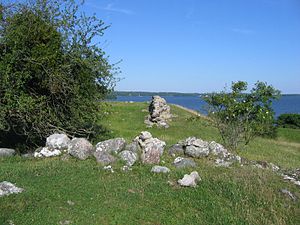
Back Adel i Sverige Danish Schwedischer Adel German Nobleza de Suecia Spanish Nobiltà svedese Italian Zweedse adel Dutch Nobreza da Suécia Portuguese Adel i Sverige Swedish


The Swedish nobility (Swedish: Adeln or Ridderskapet och Adeln, Knighthood and Nobility) has historically been a legally and/or socially privileged class in Sweden, and part of the so-called frälse (a derivation from Old Swedish meaning free neck). The archaic term for nobility, frälse, also included the clergy, a classification defined by tax exemptions and representation in the diet (the Riksdag). Today the nobility does not maintain its former legal privileges although family names, titles and coats of arms are still protected. The Swedish nobility consists of both "introduced" and "unintroduced" nobility, where the latter has not been formally "introduced" at the House of Nobility (Riddarhuset). The House of Nobility still maintains a fee for male members over the age of 18 for upkeep on pertinent buildings in Stockholm.
Belonging to the nobility in present-day Sweden may still carry some informal social privileges, and be of certain social and historical significance particularly among some groups. Sweden has, however, long been a modern democratic society and meritocratic practices are supposed to govern all appointments to state offices by law. No special privileges, in taxation or otherwise, are therefore given to any Swedish citizen based on family origins, the exceptions being the monarch and other members of the royal family. However, also this role is today, according to the instrument of government, ceremonial.
In 1902, Sven Hedin became the last person, other than members of the royal family, to be ennobled in Sweden. Since 1974, the monarch is only permitted[according to whom?] to confer titles of nobility on members of the royal family. As of 2004 there were about 619 existing noble families in Sweden, with about 28,000 members. They are classified as counts (46 families), barons (124 families) and untitled nobility (449 families).[1]
Until 2003 the nobility was regulated by a government statute, but in that year the statute was lifted so that governmental sanction and legal regulation of the nobility was discontinued. The House of Nobility is now a private institution, run as any private corporation under civil commercial law, and is owned by its members. Today, the only privilege of the nobility is the right to use a helm with an open visor in their coats of arms, this according to a 1762 royal act; commoners using open visors or "noblemen's shield" (Adelig Sköld) are subjected to a fine.[2] When an association called Ofrälse och löske mäns samfund för bruk af öppne hjälmar (Commoners' and vagabonds' society for the use of open visors) petitioned the Swedish government for amnesty (Swedish: abolition) in regards to violations of the 1762 act, the petition was not tried nor granted. The Supreme Administrative Court of Sweden ruled, in 2013, that, since no one has the right to amnesty, the government's decision did not concern anyone's civil rights according to the European Convention on Human Rights, and could thus not be examined by the court.[3][4]
- ^ Riddarhuset Archived 2010-08-17 at the Wayback Machine
- ^ Svenska heraldiska föreningen: Adelig sköld och hjälm Archived 2014-01-07 at the Wayback Machine
- ^ Skövde Nyheter: Vapensköld rättighet bara för adeln, 2013-05-31
- ^ Supreme Administrative Court decision 2013-05-20, case no. 4346-12
© MMXXIII Rich X Search. We shall prevail. All rights reserved. Rich X Search